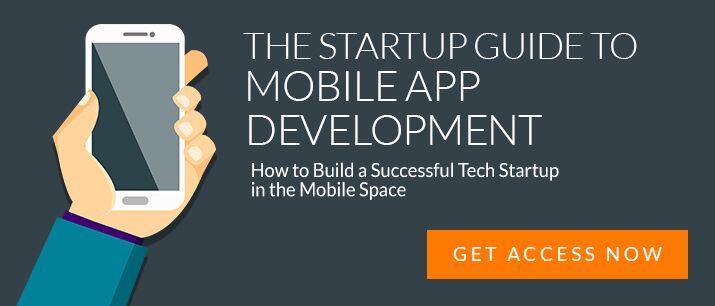Launch Hack: How To Get 100,000 Downloads in a Month
So you’re building an app.
Have you thought about what you will do when you launch your app?
Are you going to make a bang?
Or a fizzle…
The unfortunate reality is, most apps don’t ever really take off. Why?
Because there’s no one there to drive the app marketing engine – [here comes a metaphor…]
Think of your app like a car. A perfectly fine vehicle, providing there’s a driver behind the steering wheel. And providing that the driver actually knows what they’re doing!
Launching your application is the same. If you’re not driving that process, or if you don’t know what you’re doing, your chances of making a splash are slim-to-none.
I don’t like those odds.
In this article I’m going to give you a step-by-step guide for how to launch an app. I’ll be covering the whole process in detail:
- Preparation work
- Identifying traffic sources
- Building relationships with key influencers
- Pitching your story
- Activating your network
I’ll include tools that we’ve used in the past to attain massive media exposure (our apps have been featured on all the major TV channels in Australia and in some of the world’s most influential tech-blogs).
Let’s get started:
When do you start marketing?
There is no right or wrong time to start.
But I know that if I could have started planning/marketing my business 6 months prior to launch I would have been 6 months ahead by the time we started.
It gives you an incredible advantage and allows you to be proactive, rather than reactive.
In business there are three factors that determine your growth:
- Marketing – will determine how much revenue you generate to fund growth
- Systems and Operations – determines how much load your business can handle before falling over (limits revenue generation)
- Luck – plain ol’ luck…
We can control (a) and (b), but we can’t generate more luck. (Actually, here’s a WikiHow on How To Be More Lucky)
The main reasons why people delay their marketing efforts are:
- The app still has some minor bugs;
- They don’t know what they’re doing;
- They don’t have time;
- They don’t know where to start.
The fact of the matter is, all applications have bugs and no one knows what they’re doing the first time they do it. Don’t let those insignificant issues become an obstacle to your success!
How much should you focus on marketing?
Most new businesses (and software businesses alike) will focus mostly on Systems and Operations to make sure their app can handle MILLIONS of users at any given time.
But if you’re focusing too much on Systems and Operations then you probably won’t need that kind of capacity…because you simply won’t have the users.
You need to have a balance.
“You should be prepared to set aside the first 2 weeks on nothing but marketing your new app.”
– Dave Wooldridge >tweet<
I would even go as far as to say that if you have a business partner (as you should) then one of you need to be dedicated to marketing.
At least in the early days. Depending on your business model you should spend at least 10% of your gross annual income on marketing, but anywhere up to 30% of total company time on marketing activities.
I’m going to repeat myself a little bit but I feel that it’s justified:
Your business will only grow as fast as you can onboard new clients. And you will only on board new clients if you do lots of marketing
Step #1: Do your Prep-work
Preparation is possibly the most important part of launching an app. Without a decent amount of preparation and a solid plan your launch will end up looking like a skirmish of half completed ideas.
Bonus: The Ultimate App Launch Checklist You Must Complete Before Going Live
Proper, Prior Preparation Prevents Poor Performance – the 5 P’s >tweet<
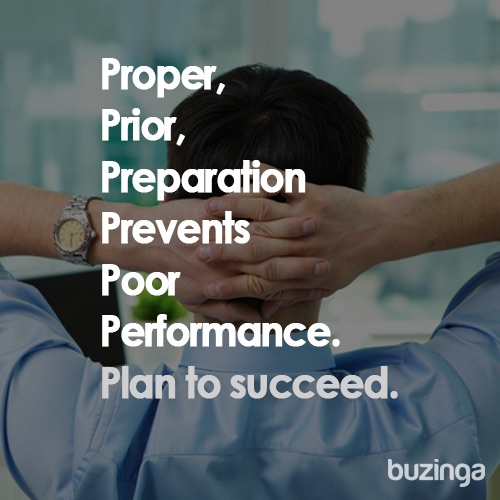
Get the mundane bits and pieces out of the way first. Here is a handful of items you need to complete before the real work start. This is just to make sure you’ve got everything in place:
- Claim social media accounts – Facebook, Twitter, Google+, Linkedin, Pinterest, Instagram, etc.
- Create your perfect app name & write a compelling description
- Create a user persona to get clear on your target audience
- Implement analytics and behavioural tracking
- Set up a basic website or landing page with a blog to promote your app and encourage sharing, as well as collect emails of people you want to keep in the loop.
- Do some keyword research to find the most effective keywords (a big part of App Store Optimisation)
- Open Apple Developer account/Google Play developer account
For a complete checklist of everything you need to get done before you launch, click here.
Step #2: Identify key traffic sources
I often hear people say “I don’t want to start drawing attention to my app too early.” Let me tell you a secret: There is no such thing as too early.
If you want to get a lot of downloads then you need to attract a lot of traffic.
Finding the best traffic sources:
The first thing you want to do here is pick out 10 successful apps in a similar genre or apps that attract a similar audience to what you’re after. How do you know if they’re successful? Use XYO.com to get an overview of:
- How many downloads an app has got on both iOS and Android (rough figures only)
- Star rating across both iOS and Android
- Reviews across both iOS and Android
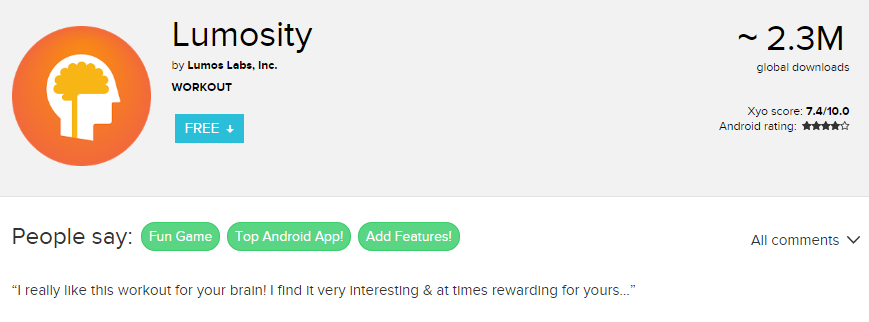
XYO.net overview of Lumosity.
Any app with more than 1 million downloads is worthwhile adding to your list. The idea here is to disseminate where they got their traffic from and copy them.
Use SimilarWeb to get a traffic source breakdown of any web app or mobile app, split between:
- In-store sources – referring to how people find you within Google Play/App Store
- External sources, e.g. Search, Mail, Referrals, Social, Display ads, etc.
Bonus: How To Build An App Born To Go Viral Like Candy Crush
From this you should be able to gauge where traffic is coming from (on average) and where to spend your time when launching your own application. The majority of traffic will come from external resources.
[Display ads will always be high up on the list because once you’re big enough and have a refined product you can afford to spend money on ads.]
Don’t go jumping into all of these sources, you’ll end up with more than you can handle. Pick the top 2 and focus down so that you can be productive with your time.
Bonus: 5 Cheap Customer Acquisition Strategies To Reel In Your First 5000 App Users
Most of your traffic will likely come from 2 of 3 sources (in order of most to least):
- Social media (Facebook, then Twitter)
- Blogs ( referrals – and not necessarily the big blogs like TechCrunch, etc.)
- Google search (SEO – search engine optimisation)

Traffic source breakdown from Candy Crush – SimilarWeb
Search engine traffic will grow over time. It’s not a quick fix so we discount that right away. Instead focus on building social media buzz and getting featured on relevant blogs. That will actually help search engine traffic growth as well.
Create a media list:
Punching out a good story will massively improve your chances of getting a few write ups.
I’ve taken the courtesy of preparing a press release guide that you can follow [Pats on back]. This will guide you through the process of writing a compelling press release.
Then all you need is a list of app/tech review companies to contact… oh, don’t worry I have provided that too!
Here is my list of the top 100 app/tech review companies. Use it wisely – with great lists comes great responsibility.
Find relevant bloggers:
Going back to your findings on SimilarWeb, list out all the blogs (referral traffic) that have linked to one of the apps you’re watching.
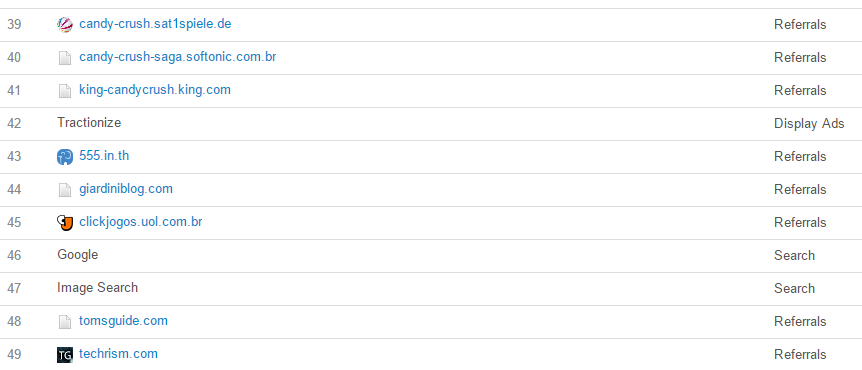
Snippet of referral traffic to Candy Crush on the App Store – SimilarWeb
You can also find relevant bloggers with this Google-Images hack:
- Open the web-based App Store/Google Play page of the apps that you’re watching.
- Right click (for PC; or COMMAND+Click for Mac) on one of the screenshot images of the app.
- If you’re using Google Chrome (as you should be) you’ll get an option to ‘Search Google for this image’.
- Now you’ll see every website that has ever posted that image. Scroll through the results and find relevant blogs.
- This also works if you save the image to your desktop and drag them into Google.
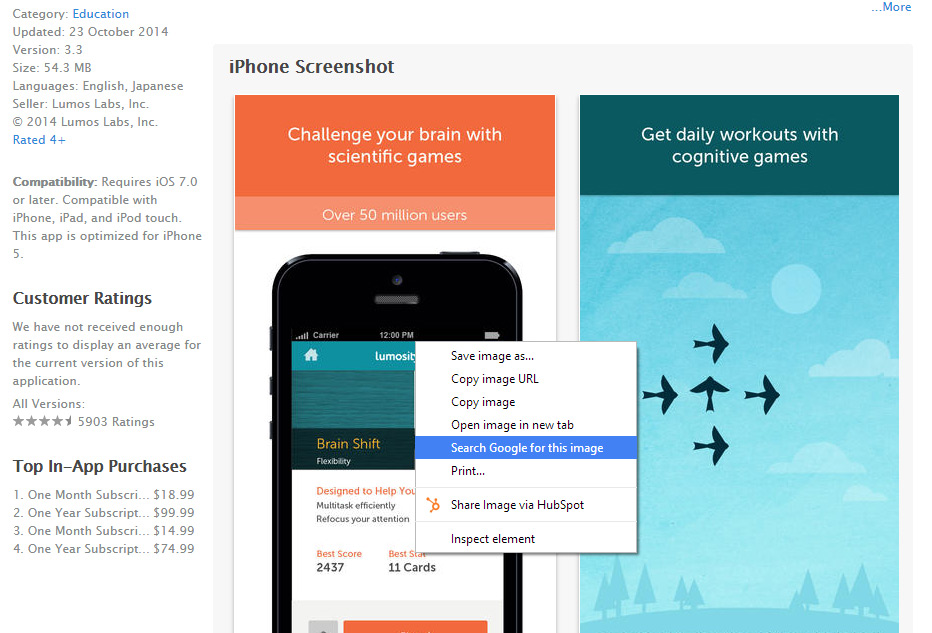
Step #3: Building relationships
You don’t need to contact all of them (phew). Remember the 80/20 rule? 20% of your effort will bring you 80% of the results. So focus on the 20% of blogs that you believe will bring you the best results. Filter the good from the bad by looking at:
- Relevance – will their readers be interested in your app?
- Readership – how much traffic does their site get? Use www.alexa.com for quick reference.
- Connections – do you know anyone who can make an introduction with the site owner?
- Reach – will they promote you pushing your app out to their email subscriber list, Facebook and Twitter following, etc.
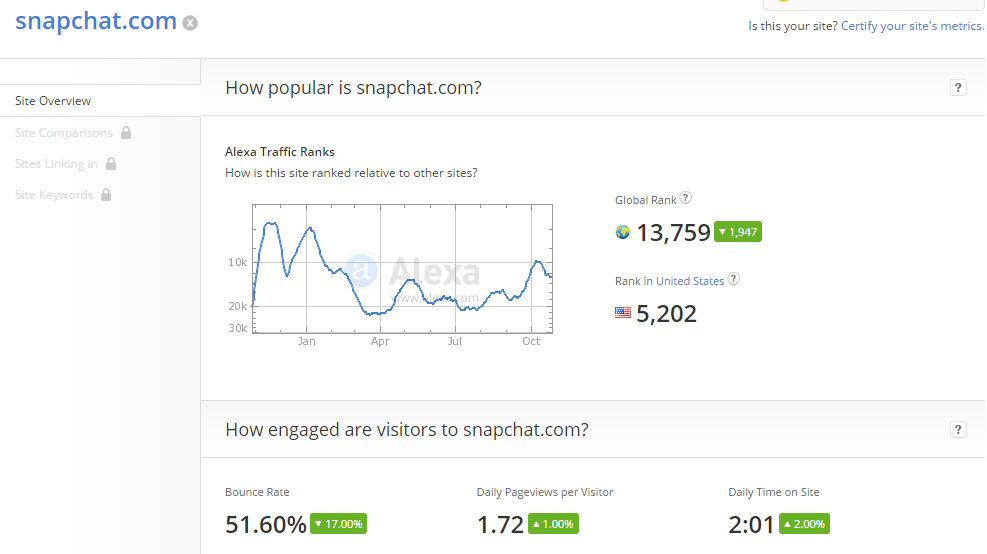
Alexa.com overview of Snapchat’s blog
Keep a spreadsheet of; publication, URL, name of the author/writer to help you stay organised for the next steps. This spreadsheet is worth its weight in gold if used right because it contains blogs that have a good chance of featuring you and driving much needed traffic.
Getting in touch
If you don’t know the blogger then you need to do one of two things:
- Build a relationship by engaging with them over time – hard
- Get an introduction from a mutual friend – easy
Schmoozing a blogger that you don’t know can be hard. Often they don’t interact or care to speak to you if they don’t know who you are or if you have nothing to give them. I would only recommend this as a fall-back plan if you can’t get an introduction.
How do you get an introduction, you ask?
Find your bloggers on Facebook and add your mutual friends to your blogger list. You can also use professional social networks like Linkedin.
Bonus: 5 Ways To Get Your App Shared On Facebook
Planting the seed
Work your way through your blogger list and connect with individuals using the following message:
Mutual friends: “Hey_____, I see you’re friends with _______. Do you know him well enough to introduce me to him next month? I’m building an app and I think it could be a good story for them. Cheers!”
No mutual friends: Simply tweet or publish a Facebook post: “Does anyone have any connections at ________. I’ve got a great story for their blog. PM me!”
Wait for the response and judge the mutual friends relationship with the blogger accordingly (1 great, 10 weak). Scrap the ones that are a 3 or less.
Do everything you can to make besties with the 3-and-above’s. Really do your best to make friends with them – genuinely. Bloggers are people too…
Step #4: Pitch your story
Send them a friendly message with 5 bulletpoints about what makes your app unique, a dropbox link to high resolution pics of your app and your trusty press release attached. A message like:
——
Hi Jim,
How are you? I’m a big fan of (insert blog name) and wanted to keep you in the loop of what I think could be a really good story for you. Check out a couple of pictures of our new application.
We are excited about this project because:
- Point #1
- Point #2
- Point #3
- Point #4
- Point #5
If you’re interested please let me know how I can help you make the writing process easier for you. I can send more information. We’re launching on ________________.
Thanks for your time
(Your name)
——
Securing the story
A thumbs up at this point doesn’t mean that the story is secure. At some point you want to make contact with the blogger over the phone to bond a little bit. Get chummy.
You’ll need to be a squeaky-wheel to ensure your story isn’t forgotten. Make sure to ask the blogger:
- “We’re going live on _____________. Can the story be published at that time?” Try to get as close to that day as possible and preferably in the morning on a weekday.
- “I’ve found that Facebook is a great way to connect with our audience. Can you post our story on your Facebook page the morning it goes live?” Make sure you have built up a bit of a Facebook following before making these types of requests…
- “I love your newsletter and read it avidly, as I’m sure others do too. Can our story be featured in your newsletter?”
- Try to get on any other media where they have a strong following; Twitter, Pinterest, Google+, etc.
Timing is important
This might seem intrusive or rude but you need to keep in mind that bloggers work hard to get their stories out to as many people as possible. It’s in their interest to time their launch well.
Just be polite and explain why timing is important.
Step #5: Activate your network
Your best advertisers are your friends and family.
You’ve spent all this time and money working to create something you’re really proud of. They will support you in that. Ask them for their input and advise along the way. Even if you don’t take on all their ideas, they’ll still be engaged and excited to be part of something cool.
Throw a launch party. Make it a big deal. Think about it, you’re starting a new business, IT IS A BIG DEAL!
Empower your friends to contribute by sharing your vision. Share with them your ‘why‘.
Bonus: How To Generate Buzz Before Launch
Where your launch could go wrong:
It’s not all fun and games. Here are a handful of pitfalls I’ve seen in previous launches:
Bonus: 7 Reasons Why Your App Failed (And How To Prevent Them In The First Place)
- Not measuring user engagement and retention – if you don’t keep a keen eye on your metrics then it’s virtually impossible to know what’s working and what isn’t. Take a look at our guide for How To Measure The Success Of A Mobile App as well as How To Gain Actionable Insights From The Top 5 App Metrics for more on this.
- People don’t know how to sell themselves or their app – the art of writing sales copy and a sales pitch is vital to the success of your launch. You can contact 1000 bloggers with a blunt pitch and land 1 story. Or you can contact 25 bloggers with a razor sharp pitch and land 15 stories. Spend time learning about pitching and copy writing, and make your life easier.
- Not updating enough – app development is an iterative process of constant improvement. You never know how your users are going to respond to your app until it’s built and they are using it. So it’s important that you take an iterative approach and build on it over time with improvements, bug fixes and new features.
- Make it easy to download – make a link to your app available for download on ALL your collateral in places that are obvious.
- Losing momentum – marketing is not a once-off activity. It’s an ongoing effort that requires hard work, focus and excellent execution. Keep the momentum going!
Read our detailed marketing guide to learn how to attract (and keep) a steady stream of downloads coming in.
Tools you can use
Check out 21 Tools For Marketing Your Startup for a detailed list to help you with marketing.
Here’s a recap of the ones I’ve mentioned in the text above:
- Google Docs – for sharing documents with colleagues and keeping tabs on your lists.
- Dropbox – all your photos and files in one place accessible from all your devices…what more do I have to say?
- XYO.net – research apps to find out if they get a good amount of downloads.
- SimilarWeb – drill down to find out where other apps get their traffic from.
- Alexa.com – get an overview of website traffic volume.
- MailChimp – keep a database of email addresses and stay in touch with your followers through email broadcasts.
How else can you reach your audience? Share your best advise, views and thoughts below!
Latest posts by Logan Merrick (see all)
- Ep 18: Collective Campus’ CEO on Intrapreneurship and Corporate Innovation - December 20, 2016
- 50 User Engagement Strategies For Planning Memorable Mobile Experiences - December 19, 2016
- Latest Data: App Monetisation Trends And Drivers 2015-2020 - November 25, 2016



